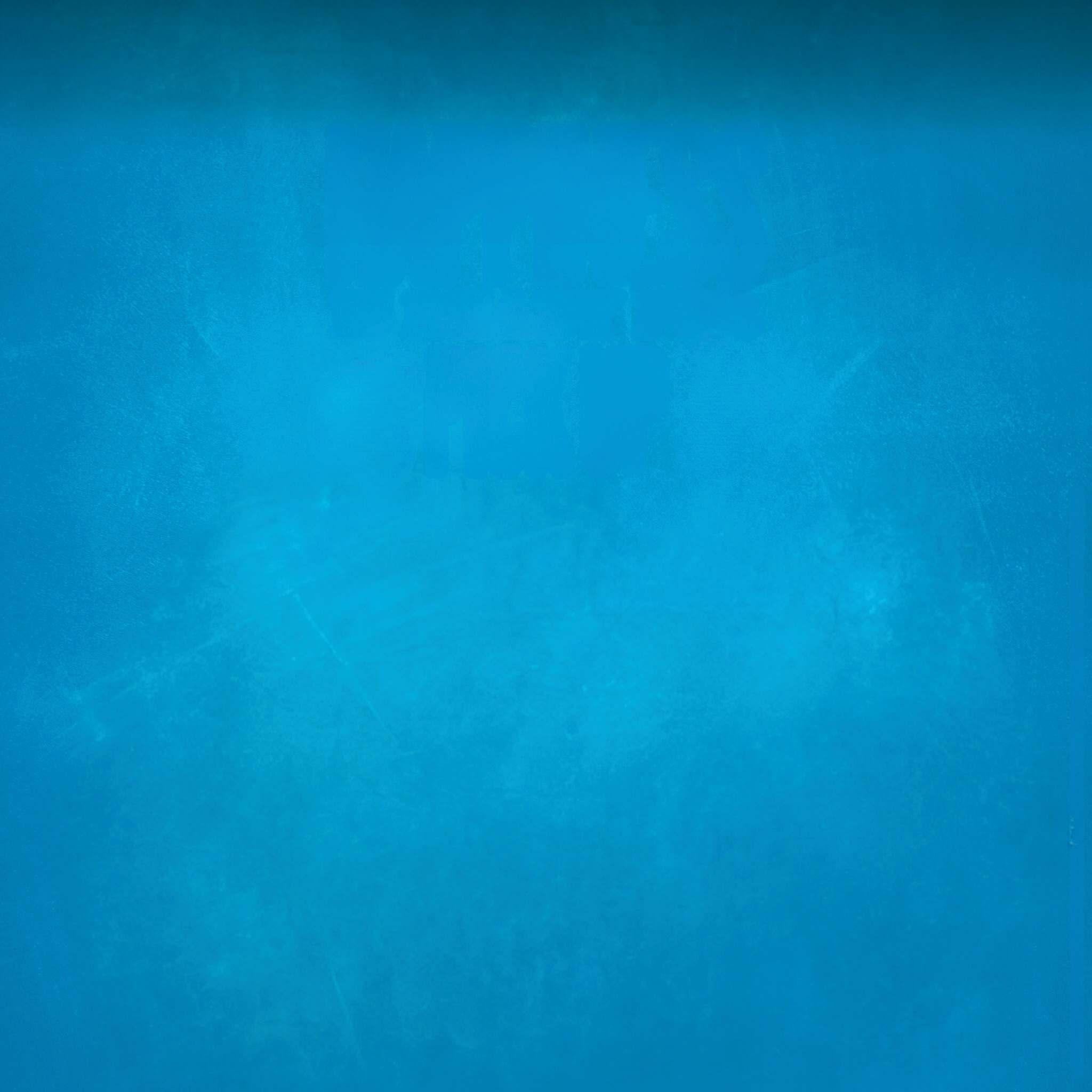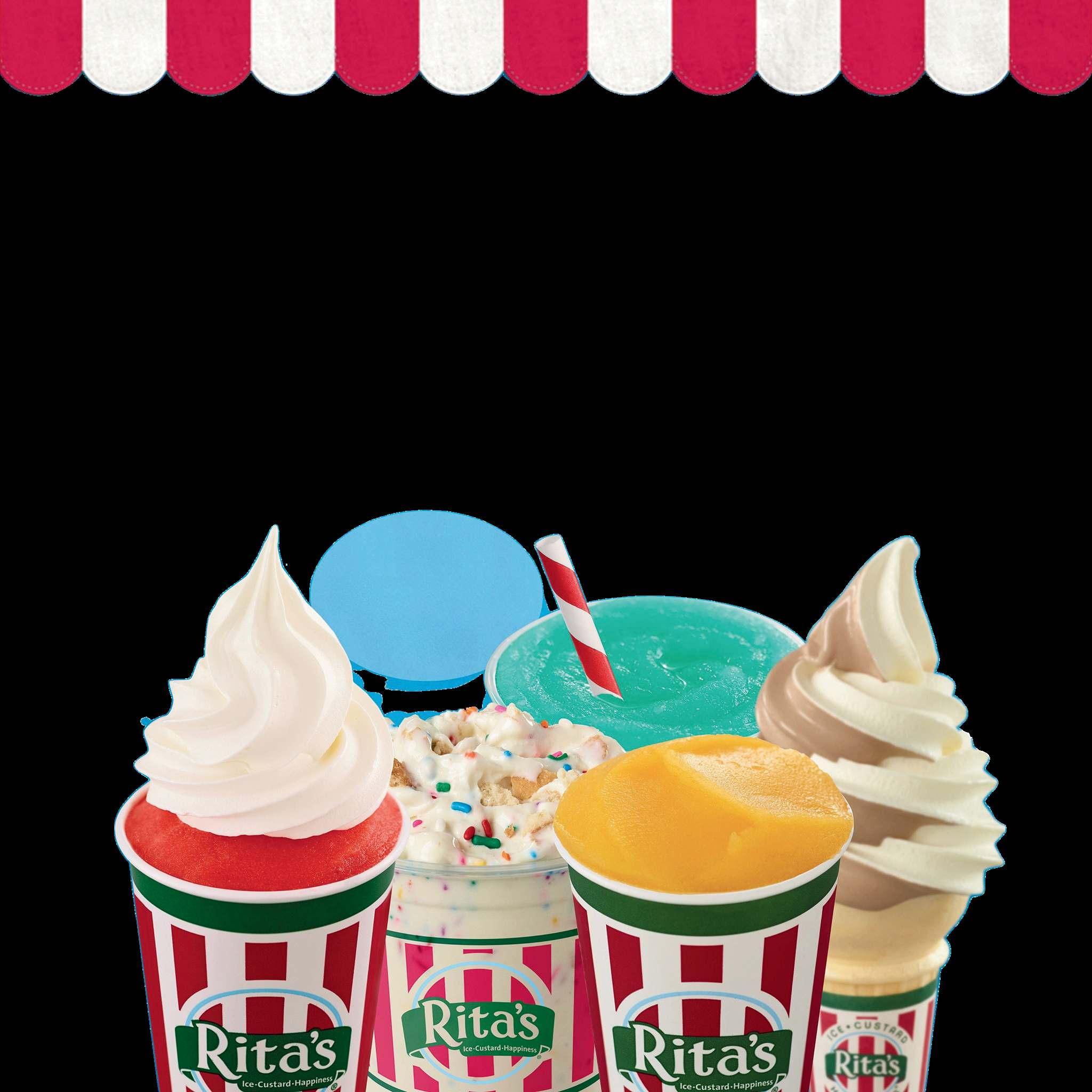
Where’s Mount Sinai
The real location is closer than you think think
Flaky But Reliable
It’s Hot Out There
Safety



The real location is closer than you think think
Safety



The Jewish outreach and education network of Southern Arizona
2443 E 4th Street, Tucson, AZ 85719
EXECUTIVE DIRECTOR
Rabbi Yossie Shemtov
REBBETZIN
Chanie Shemtov
OUTREACH DIRECTOR
Rabbi Yehuda Ceitlin
PROGRAM DIRECTOR
Feigie Ceitlin
Affiliates:
Congregation Young Israel, Chabad at the University of Arizona, Chabad on River, Chabad of Oro Valley, Chabad of Sierra Vista, Chabad of Vail and Lamplighter Chabad Day School of Tucson

EDITOR
Rabbi Yehuda Ceitlin
COPY EDITOR
Suzanne Cummins
CONTRIBUTING WRITERS
Zalman Abraham, Yehuda Altein, Symour Brody, Feigie Ceitlin, Libby Herz, Mendel Kalmenson, Menachem Posner, Mordechai Schmutter, and Benjamin Weiss.
COVER PHOTO
Martha Lochert Photography
SPECIAL THANKS Chabad.org
EDITORIAL INQUIRIES OR ADVERTISING
Phone: 520-881-7956
Email: info@ChabadTucson.com
Keeping Jewish is published in print periodically by Chabad Tucson and is distributed free in Tucson and around Southern Arizona
Chabad Tucson does not endorse the people, establishments, products or services reported about or advertised in Keeping Jewish unless specifically noted. The acceptance of advertising in Keeping Jewish does not constitute a recommendation, approval, or other representation of the quality of products or services, or the credibility of any claims made by advertisers, including, but not limited to, the kashrus of advertised food products. The use of any products or services advertised in Keeping Jewish is solely at the user’s risk and Chabad Tucson accepts no responsibility or liability in connection therewith.
Note: “G-d” and “L-rd” are written with a hyphen instead of an “o .”This is one way we accord reverence to the sacred divine name. This also reminds us that, even as we seek G-d, He transcends any human effort to describe His reality.
Search online for “Mount Sinai” and Google Maps will swiftly point you to a marker in Jabal Mousa, Arabic for Mount Moses, located in the southern tip of the Sinai Peninsula of Egypt.
Consult with a biblical scholar or geographer, and you will hear about other locations such as Mount Sin Bishar and Mount Helal in the peninsula, Jebel alMadhbah at Petra in Jordan, Jabal al-Lawz in northwest Saudi Arabia, and Hashem el-Tarif near the Israeli city of Eilat.
But review the Torah itself, the actual document given by G-d on Mount Sinai, and you will find no reference to the exact location. You will learn what happened when G-d spoke directly to the Jewish people, but not where. What is more, the many commentators on Torah seldom discuss it either.
This anomaly was troubling for an Israeli soldier named Dr. Moshe Berhab, who examined the issue further when he had the opportunity to visit the Jabal Mousa location in 1956. This was after Israel captured the Sinai peninsula during the Sinai War to end the Egyptian blockage of Israeli shipments through the Straits of Tiran.
Berhab had fought in that battle and was excited to stand on the ground where our forefathers gathered some 3,300 years ago. He was possibly walking on the same earth where our people became a nation and received the Ten Commandments.
Upon climbing up the mountain, he expected to feel spiritual enlightenment or divine energy. Instead, he felt none of that
By Rabbi Yehuda Ceitlin
and was left with deep disappointment. Upon his safe return home and in search of an explanation, Berhab wrote a letter to the Rebbe, Rabbi Menachem M. Schneerson, of blessed memory.
The Rebbe wrote back a letter (published in Igros Kodesh 14, page 495) pointing out that the word Torah is rooted in the Hebrew word hora’ah, meaning instruction and a roadmap on how to live life.
The Rebbe explained that it is called the Torah of life and the eternal Torah (Toras Chaim and Toras Olam). This means that it is an eternal teaching that is binding for every Jew in every generation at any time and location. And it is through that that we are an eternal nation.
The Rebbe continued, “The importance of Mount Sinai is the Torah that we received upon it, once the Torah becomes part of our life. But the physical identification of the mountain does not have any special significance.”
Other commentators explain that had the Torah been given in an urban and perhaps more appropriate setting, such as the holy city of Jerusalem or Hebron, it could have been reduced to a specific class in society, period, and space.
Instead, it was given on a mountain surrounded by open land to teach that everyone has equal access to follow its timeless wisdom and the right to practice its divine teachings. Once the Torah was given, Mount Sinai went on to live through us.
My friend, author Rabbi Eli Wolff, commented that if you are asked what is the exact location of Mount Sinai, you can easily point to your own heart. That is where your soul resides and your soul is intrinsically bound to the Torah.
The upcoming holiday of Shavuot (evening of Tue, Jun 11, 2024 – Thu, Jun 13, 2024) commemorates the date when G-d gave the Torah to the Jewish people at Mount Sinai. The custom is for men, women, and children to hear the reading of the Ten Commandments at the synagogue. Why? Because we need Mount Sinai there and you are the only one who can bring it.
- Rabbi Yehuda Ceitlin is the Outreach Director of Chabad Tucson, the Jewish network of Southern Arizona

Rabbi Moshe Kotlarsky, the energetic vice chairman of Merkos L’Inyonei Chinuch, the educational arm of the Chabad-Lubavitch movement, passed away after a lengthy illness on Tuesday, June 4 (27 Iyar). He was 74, four days shy of his 75th birthday.
Kotlarsky was instrumental in growing Chabad’s global footprint to almost 6,000 emissary couples in more than 100 countries around the world. With an endearing personality and easy ability to connect with others, Kotlarsky encountered thousands of people in his decades of peripatetic travel on behalf of Chabad, serving alternatively as rabbi, fundraiser, and friend.
Kotlarsky became well-known for his role in the annual Kinus Hashluchim, or International Conference of ChabadLubavitch Emissaries. He directed an army of planners, staff, and volunteers to ensure every detail of the massive event was perfect. As Chabad’s institutional network expanded over the years, so did the Kinus. Its banquet eventually became the largest sit-down dinner in New York City, outgrowing all its formal venues. In 2023, more than 6,500 Chabad emissaries and their guests gathered at the New Jersey Convention Center.
Though comfortable in the spotlight, Kotlarsky also worked tirelessly behind the scenes. Whether in need of communal advice or facing personal hardship, rabbis knew they could count on Kotlarsky for his mentorship and support.
Kotlarsky was born on May 29, 1949 (1 Sivan, 5709), in Brooklyn, to Rabbi Tzvi Yosef and Golda Kotlarsky. His father studied in Yeshivat Chachmei Lublin and then Tomchei Temimim-Lubavitch in Warsaw and Otwock, escaping the Nazi onslaught with the help of visas issued by Japanese diplomat Chiune Sugihara, which allowed him to find refuge in
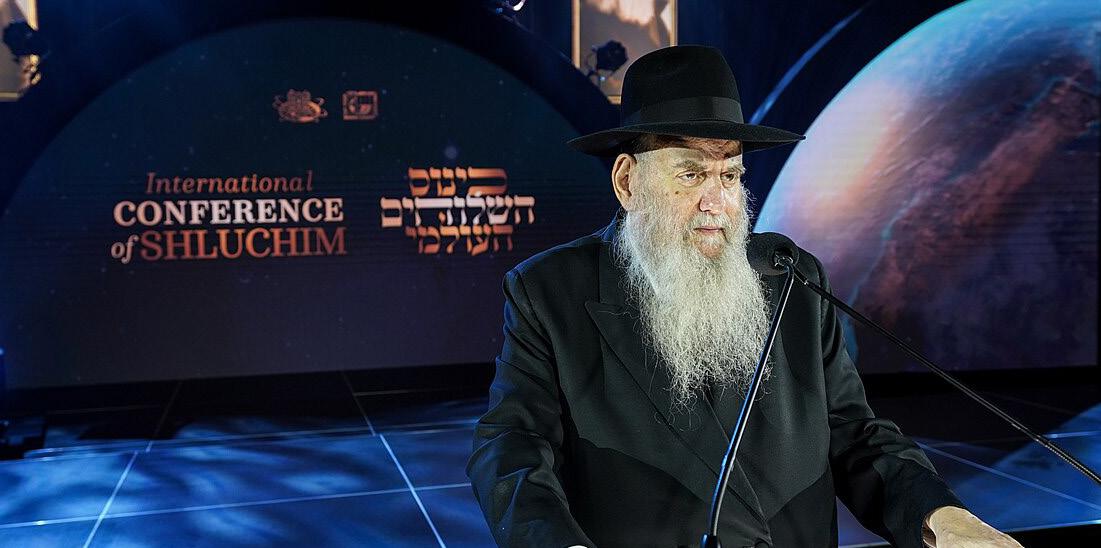
Kotlarsky was raised in Brooklyn’s Crown Heights section. He attended yeshiva there before continuing his studies in Montreal, Canada. As a young student, Kotlarsky once persuaded the famous Yiddish comedian Shimon Dzigan to wear tefillin, which moved Dzigan so much that he was late for his show. Dzigan explained to the audience that he couldn’t refuse a request from a Lubavitcher yeshiva student to wear tefillin, and the emotional experience caused his makeup to run.
Kotlarsky married Rivka Kazen in the early 1970s. Like so many young Chabad Chassidim, the Kotlarskys expressed to the Rebbe, Rabbi Menachem M. Schneerson, of righteous memory, their wish to set out to some distant point on the globe where they could serve as Shluchim (emissaries). It soon became clear, however, that Kotlarsky’s life mission was to be fulfilled at Chabad Headquarters.
For decades after that, he spent more time on the road than at home, traveling on buses and planes, first throughout the United States and South America, then Europe, the Far East, and even the Himalayas.
During his travels on behalf of the movement, Kotlarsky would meet with the leaders and members of local Jewish communities, listening to them attentively and carefully considering their needs. Did they have Jewish education for their children? A functioning mikvah? Access to kosher food? Kotlarsky would assess all these factors and suggest ways that Chabad could assist them in strengthening their community. Sometimes, they would ask that Chabad send a rabbi and rebbetzin to help them. All of this Kotlarsky would put into a detailed report for the Rebbe’s review.
Kotlarsky directed and heavily expanded Chabad’s rabbinical visitation program, which sees rabbinical students fan out across the globe during the summer break and other times of the year. He also chaired Chabad on Campus International and the Rohr Jewish Learning Institute (JLI) and spearheaded various additional initiatives, including CTeen, CKids, Chabad Young Professionals, and Chabad on Call.
At this year’s Kinus, during his annual report on Chabad’s massive expansion during the past year, Kotlarsky reiterated, as he always did, that it was not a time to rest.
“We know we have a great deal of work still ahead,” he said. “The Rebbe once said you could have 1,000 people in your community. If only 999 have been touched and one wasn’t… the mission has not yet been accomplished.”
In addition to his wife, Rivka, he is survived by his nine children, many grandchildren, and great-grandchildren. He is also survived by his siblings, among them Mrs. Chanie Shemtov, Rebbetzin of Chabad Tucson, who was at his side during his passing. May his memory be for a blessing.

 By Libby Herz
By Libby Herz
When there is an educational initiative in Tucson, Arizona, you can count on Rabbi Dr. Howard Schwartz and his wife, Trudy, to be involved. Whether planning, attending, or giving a Torah class, the Schwartzes constantly embody a deep love for learning and community.
“Learning Torah is such an important part of life,” says Howard, 87, a retired internist and immunologist. He has been approaching Torah study with a mindset of exploration and application to modern life and encouraging others to do the same.
“As we go through life and new things get
invented, we have to look inside traditional Judaism and see how to adapt” he says.
“The basis is in the Torah, and we must learn how to apply it to modern times. The basics are in there but need to be sorted out.”
Howard has been helping others grow in their learning as a visiting scholar at the University of Arizona’s Center for Judaic Studies, and teaching at congregations
Anshei Israel, Bet Shalom, and Handmaker Jewish Services for the Aging. For the past 12 years, he and Trudy have participated in Chabad Rabbi Yehuda Ceitlin’s weekly Lunch & Learn and the Rohr Jewish
Learning Institute (JLI) courses at the Tucson JCC.
A teaching from Ethics of Our Fathers is one of Howard’s favorite Torah quotes, reflecting his deep engagement with the text. “Delve into it and delve into it, for all is in it,” it reads (Pirkei Avot 5:21). “Look into it, study it, poke at it,” he advises. “Don’t be satisfied with superficial meaning. Look more carefully at the words, and you’ll get something out of it.”
As an illustration of the richness of Torah study, Howard cites the verse, “And let them make Me a sanctuary, that I may
dwell among them” (Exodus 25:8). “You wonder, does G-d need a house to live in?” he asks, and suggests switching around the vowels. Insead of mikdash for sanctuary, he suggests mekudash which means a sanctified person. “That would mean that if you become more sanctified, then G-d can truly ‘dwell within you’.”
Growing up in the Bronx of New York, Howard’s fascination with Torah learning wasn’t dominant. Though he attended a Jewish day school, which he admits “had a huge impact on me,” when considering a career, he pursued medicine instead of following his family’s rabbinical legacy.
He earned a degree from the Albert Einstein College of Medicine at Yeshiva University and then completed his residency at NYU Bellevue Hospital Center. He went on to serve in the U.S. Army at Brooke Army Medical Center in San Antonio, Texas and finished a fellowship at Massachusetts General Hospital, affiliated with Harvard Medical School.
Howard then settled in Cleveland, taking a position at Case Western Reserve University School for many years. Howard took a leave when battling sarcoma, and though he attempted to return to work after, he found it too strenuous. He retired and moved to Tucson with Trudy and their 3 children.
Even while working, Howard made it a point to study regularly despite his busy schedule. “I really felt the absence of Jewish learning,” he says. It was such an important part of life. I had a chavrusa (study partner) with several rabbis in Cleveland over the years. If I didn’t do it for a week or two, I really felt an absence.”
Trudy, an artist, is known for her sculptures, paintings, etchings, and prints. Though she didn’t have a formal Jewish education growing up in New York City, she more than made up for it in her later years.
Trudy’s love for learning is evident in her constant participation in lectures, classes, and study groups. Her perspective on Judaism highlights the importance of how we treat each other, emphasizing guidelines that instruct Jews to be thoughtful, caring,
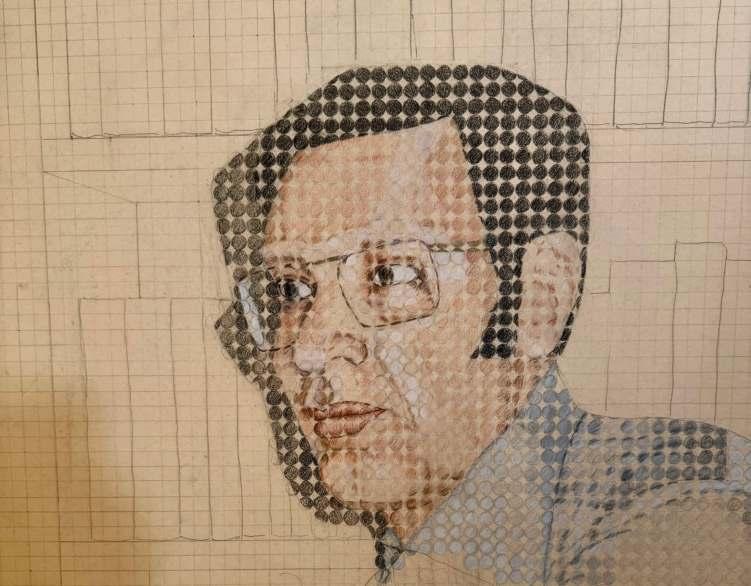
restrictions,” she says, “but so much in Judaism is about ways of acting—being thoughtful, caring, charitable, and mindful of other people. The essence of Jewish laws is not about restrictions but about fostering a mindful and compassionate community.”
The upcoming Shavuot holiday commemorating the Torah’s giving on Mount Sinai holds special significance for Howard and Trudy. It celebrates the Jewish people’s bond with eternal wisdom, and the couple joins the practice of staying up
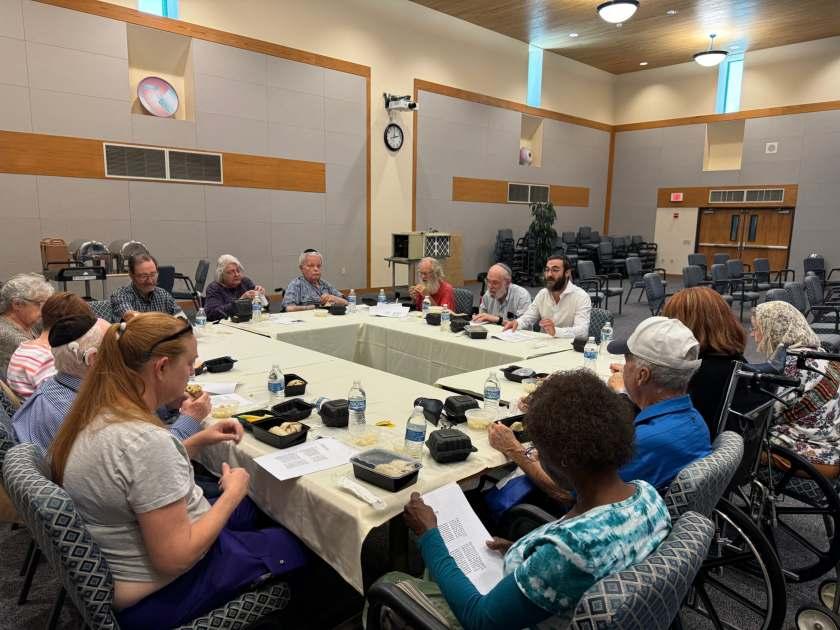

In their daily lives, Howard and Trudy try to exemplify the values they teach. Trudy, not shy about being vocal and expressing feminist views, points out that Torah study is not just about intellectual engagement but about becoming better people and strengthening our Jewish communities.
“One of the things important to Judaism is not only how we behave for G-d but how we treat each other,” she says. “That’s the basis for a lot of the rules—how we treat our neighbor, our family. If you take care of the widow, orphan, needy... it’s about being thoughtful, caring, charitable, and mindful of other people.”

Howard, ever the dutiful husband, is wise enough to concur. He points to the practice of sacrificial rites, which have not been practiced since the Romans destroyed the Second Holy Temple (Beit Hamikdash) in Jerusalem in 70 CE.
“The sacrifices were really about giving up baser motivations to get closer to the spiritual and to G-d,” he explains. “Looking at the practice today, ask yourself: Do I need to drive a Rolls Royce, or can I get along with a Chevy? I can use that extra money for tzedaka (charity). It’s about sacrificing our baser drives for our spiritual selves and community.”
Howard’s dedication to learning has led him to pursue rabbinical ordination which he ultimately obtained in 2012. “I got it just for its own sake,” he says modestly. “Since I’m not in medicine, learning is very good for my head, as well as for my heart.”
Asked for a tip for those interested in studying the Torah, Rabbi Dr. Howard Schwartz recommends not relying solely on translations. “If you don’t know Hebrew too well, it’s better than nothing, but don’t look at it as the final say,” he says. “Read it and say, ‘Okay, maybe there’s more there that I’m not seeing.’
“A lot of people rely on English translation, but each translation is done according to the attitude of the translator. So you have to ask yourself, does this translation have a point of view of the editor? There are all kinds of ways to understand.” Indeed there are, and Howard and Trudy don’t tire of finding those ways.

Learn with Rabbi Yehuda Ceitlin and enjoy lunch from Mae's Kosher Kitchen Open to members of the wider community
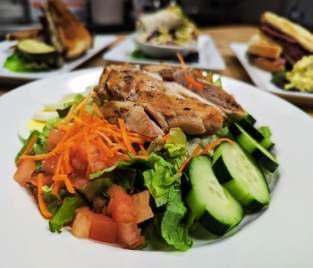
Order lunch by Thursday morning: www.tinyurl.com/maeskosherkitchen For more information, email: nlevy@handmaker.org




Many have the custom of decorating the synagogue and home with greenery and flowers in honor of the holiday of Shavuot.
The earliest mention of this custom is by Rabbi Yaakov ben Moshe Halevi Moelin, known as the Maharil (Germany, 1365–1427), who writes that it was the custom to spread grass and fragrant flowers on the floor of the synagogue in honor of the “joy of the holiday of Shavuot.” However, the custom may go as far back as the Babylonian exile: Rabbi Chaim Yosef David Azulai, known as the Chida (Jerusalem, 1724–1806), cites an ancient Midrash that alludes to this custom being practiced at the time of the Purim story.
Although Rabbi Moelin mentions only the synagogue, others add that decorating the house was also the custom.
Since these earlier sources don’t elaborate on the connection between greenery and the holiday of Shavuot, subsequent commentators have offered many explanations. However, different explanations apply to grass, trees, flowers, and plants in general.
[Before discussing the reasons for this tradition, it should be noted that some, most notably Rabbi Eliyahu of Vilnius, known as the Gaon of Vilna (1720–1797), advocated abolishing the custom of placing greenery as a decoration in honor of the holiday of Shavuot, due to it having become the practice of non‑Jews to honor their own holidays by decorating with greenery and trees. Thus, there are many communities that, despite the explanations cited below, refrain from decorating the synagogues with greenery on Shavuot.]
Perhaps the most famous reason given is that G‑d warned the Jews at Sinai that “the sheep and the cattle shall not graze facing that mountain [Sinai].” Now, the Torah was given in a desert.
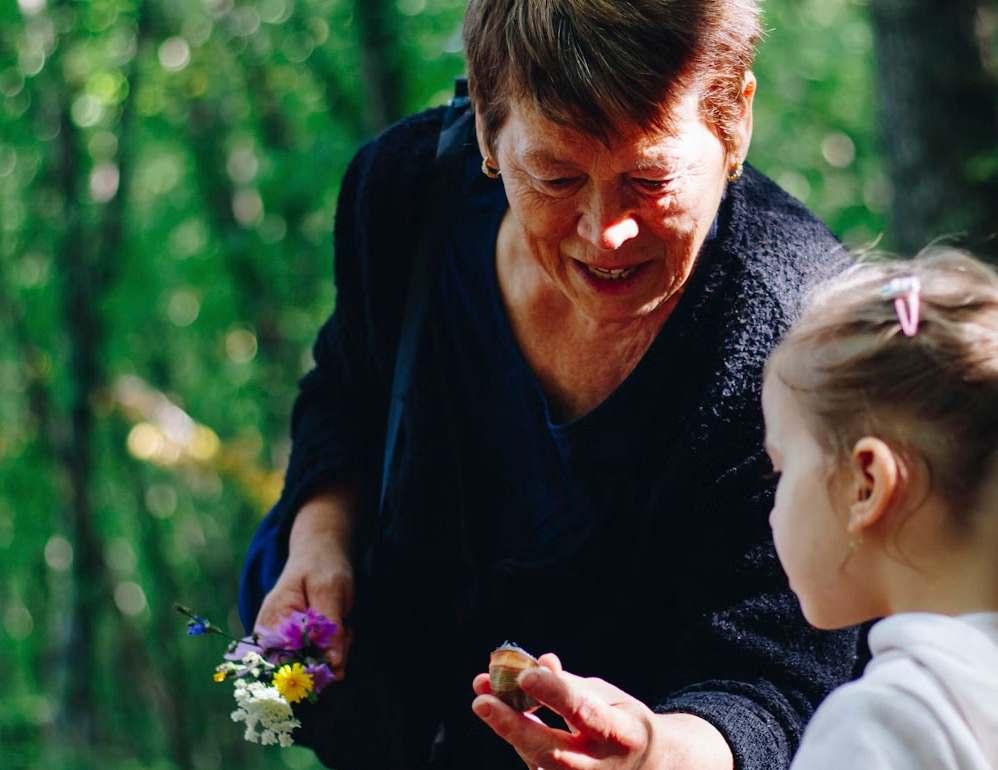
This indicates that a miracle occurred, temporarily turning that area into fertile land with an abundance of greenery. In commemoration of this miracle, it became the custom to celebrate the holiday of Shavuot with greenery.
2. Fragrant Speech
Expounding on the verse “His cheeks are as a bed of spices, as banks of sweet herbs; his lips are lilies dripping with flowing myrrh,” the Talmud explains that “from each and every utterance [of the Ten Commandments] that emerged from the mouth of the Holy One, Blessed be He, the entire world was filled with fragrant spices.” Accordingly, on Shavuot we decorate with fragrant flowers and greenery.
3. Judgment of Trees
The Mishnah states that on the holiday of Shavuot, G‑d judges the earth and
determines the abundance of the fruits of the trees for the coming year. Therefore, trees are placed in the synagogue to remind us to pray for the trees and their fruits.
4. Baby Moses’ Basket
Moses was born on the 7th day of the month of Adar. Three months later, when his mother was no longer able to hide him from the Egyptians, she put him into a basket and placed the basket among the reeds of the river, at which point he was found by Batyah (Bithiah), daughter of Pharaoh, and miraculously saved. Three months from the 7th of Adar is the 7th of Sivan, the second day of Shavuot. In commemorating this miracle, we decorate the holiday with grass and reeds.
5. “A Rose Among the Thorns” Rabbi Zvi Elimelech Spira of Dynów,
known as the Bnei Yissaschar (1783–1841), explains the custom of beautifying the holiday with flowers, as well as a custom to adorning the Torah scroll with flowers, as follows:
Elaborating on the verse “As a rose among the thorns, so is my beloved among the daughters,” the Midrash tells the story of a king who had an orchard planted with beautiful trees. He entrusted it to a tenant and went away. After a time, the king returned and found it full of thorns, so he brought woodcutters to cut it all down. However, looking closely at the thorns, he noticed among them a single rose. He smelled it, and his spirits calmed down. The king said: “The whole orchard shall be saved because of this flower.”
Similarly, the whole world was created
only for the sake of the Torah. After 26 generations, the Holy One, Blessed be He, looked closely at His world to ascertain what it had yielded and found it lacking. Looking closely, He saw a single rose—the Jewish nation. And when He gave them the Ten Commandments, and the Jewish people proclaimed “We will do, and we will hear,” His spirits were calmed. Said the Holy One, blessed be He: “The orchard shall be saved on account of this flower. For the sake of the Torah and of Israel, the world shall be saved.”
6. Harvest and the First Fruits
Some explain that this custom is based on the fact that Shavuot is called the “harvesting festival.” Additionally, Shavuot marked the start of the season for bringing bikkurim, the first fruits, to the Holy Temple. We decorate with greenery and flowers in remembrance of the custom to adorn the baskets of bikkurim (as well as the oxen leading the procession) with flowers and greenery.
7. Yissachar is Conceived
The Torah describes how Reuben went in “the days of the wheat harvest” and brought dudaim (flowers) to his mother Leah. Desiring the flowers, Rachel said to her sister Leah, “Please give me some of your son’s dudaim.”
Resentful of Rachel’s position as favorite wife, Leah replied, “Is it a small matter that you have taken my husband, that [you wish] also to take my son’s dudaim?” So Rachel said, “Therefore, he shall sleep with you tonight as payment for your son’s dudaim.” The Torah continues that from the union that night between Jacob and Leah, Jacob’s fifth son, Yissachar, was conceived.
Rabbi Moshe Alshich (1508–1593) explains that this incident occurred on the eve of Shavuot. Thus, Yissachar, who was conceived on Shavuot, was especially blessed that his descendants would be Torah scholars and sit on the Sanhedrin (supreme rabbinical court).
Midrash Talpiot explains that based on the opinion that the dudaim that Reuben brought were a type of flower, the custom is to beautify the holiday with flowers.
Afterthoughts Of course, what matters most about this holiday is not the flowery decorations but the commemoration of the giving of the Torah itself. All men and women, and even small children, are encouraged to attend the synagogue to hear the reading of the Ten Commandments on Shavuot.

Shavuot, also pronounced Shavuos, is a two-day Jewish holiday (June 11-13, 2024) that commemorates the date when G-d gave the Torah to the Jewish people at Mount Sinai over 3,000 years ago.
Preceded by 49 days of counting in eager anticipation, Shavuot is celebrated by desisting from work, having candle-lit dinners, staying up all night to study Torah, listening to the reading of the Ten Commandments in synagogue, enjoying dairy foods and other festivities.
Shavuot is a two-day holiday, beginning at sundown following the 5th of Sivan and lasting until nightfall of the 7th of Sivan (June 11-13, 2024). In Israel it is a one-day holiday, ending at nightfall of the 6th of Sivan.
How Is Shavuot Observed?
Women and girls light holiday candles to usher in the holiday, on both the first and second evenings of the holidays.
Tucson area candle lighting times: Tuesday, June 11, by 7:13 PM
Wednesday, June 12, after 8:14 PM
It is customary to stay up all night learning Torah on the first night of Shavuot.
All men, women and children should go to the synagogue to hear the reading of the Ten Commandments on the first day of Shavuot, June 12, 2024. At local Chabad centers, the service will be followed by a lavish dairy meal and ice cream party:
9:30 AM - The Shul (Young Israel Chabad Tucson), 2443 E 4th Street.
10:30 AM - Chabad of Sierra Vista, 597 E Fry Blvd
11:30 AM - Chabad Oro Valley, 1171 E Rancho Vistoso Blvd. RSVP: JewishOroValley.com/6443619
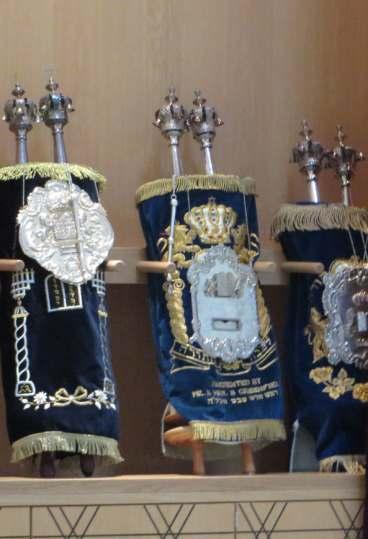
5:00 PM - Chabad of Vail, 10447 S Keegan Avenue. RSVP: JewishVailAZ.com/TEN
As on other holidays, special meals are eaten, and no “work” may be performed. More on how we “rest” on Jewish holidays.
It is customary to eat dairy foods on Shavuot. Menus range from traditional cheese blintzes to quiches, casseroles and more. For many, ice cream and cheese cake make the holiday a food favorite.
On the second day of Shavuot, the Yizkor memorial service is recited.
Some communities read the Book of Ruth during morning services, as King David— whose passing occurred on this day—was a descendant of Ruth the Moabite.
Some have the custom to decorate their homes (and synagogues) with flowers and sweet-smelling plants in advance of Shavuot.
The holiday ends on Thursday, June 13 at 8:14 PM.
You may not think of Salt Lake City as a place for an award-winning kosher falafel, but thanks to Chabad’s bright green Yalla food truck, Utahns can now easily dig into fresh, hot, certified kosher Mediterranean food.
The kosher food truck has emerged as a substitute for traditional brick-andmortar eateries that the small Jewish community of 6,000 couldn’t sustain. It follows the ways of similar food trucks that have popped up across the country and beyond.
RabbiAvremi Zippel, director of development at Chabad-Lubavitch of Utah, partnered with purveyor Elad Ogorek and helped him procure a glatt kosher certification for an Israeli-style food truck.
“In an act of Divine providence, Elad was looking to move the food truck into the Salt Lake City area,” Zippel said.
Ogorek curated an award-winning menu that includes Middle-Eastern staples like schnitzel, grilled chicken, beef kebabs, falafel and shawarma.
Yalla has been thriving for two and a half years. Four employees staff the 18-footlong food truck, which on an average day can be found in the Chabad center parking lot, alongside a few benches. The food is prepped in Chabad’s adjacent kosher commercial kitchen and then cooked in the truck.
“It’s been extremely well received in the local community by Jews and non-Jews,” Zippel said. “Chabad wanted to commit itself to offering kosher food as an option for locals, visitors and tourists coming to the national parks and ski resorts.”
And locals aren’t the only ones impressed by the offerings. The year it opened, in 2022, it won multiple awards, including being named Top Five Can’t Miss Food Truck in Salt Lake City by the localABC affiliate. In 2024 it won, among other awards, Best of Salt Lake City in the
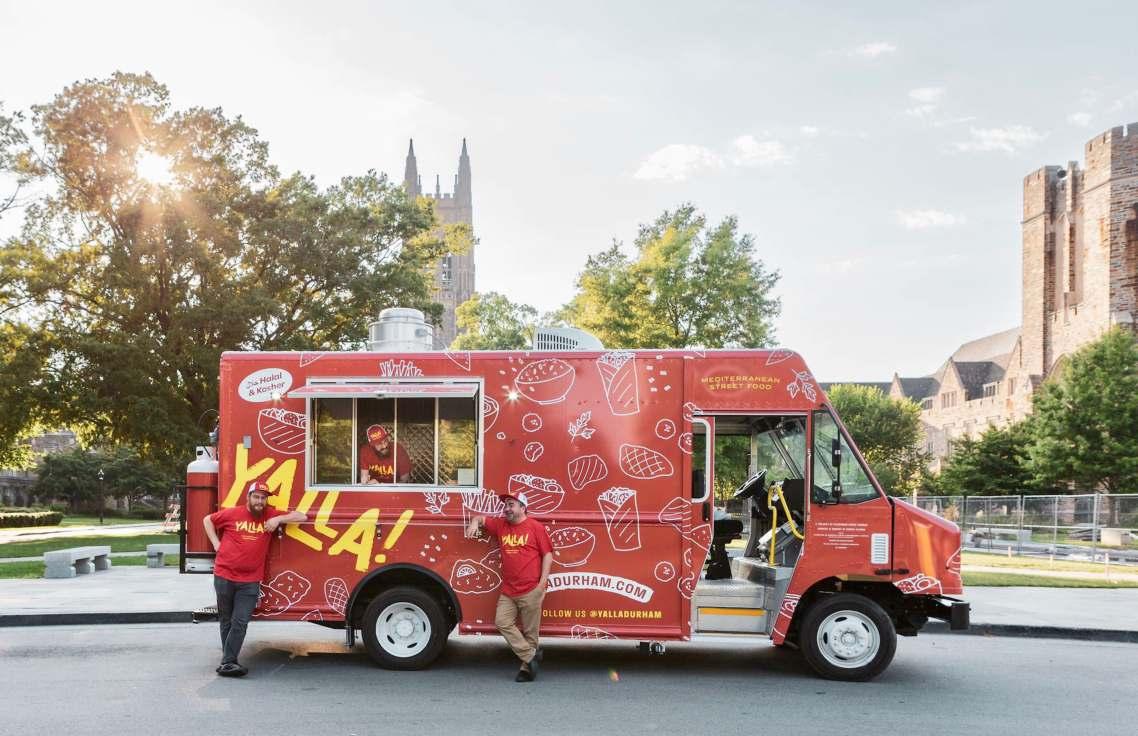
Middle Eastern Restaurant category.
Nearly 50 years ago, in the summer of 1975, the Rebbe launched the international Kosher Campaign, the latest of what would become the Ten Mitzvah Campaigns.
“It is explained in holy Jewish books ... that a person’s makeup is greatly affected by what he eats and drinks,” the Rebbe explained at the time. “The food becomes a part of his blood and flesh, and just like it affects one’s physical health, it affects one’s spiritual health as well.”
As part of this campaign, the Rebbe established a special fund which would offset the costs incurred by an individual koshering their home, and supported the numerous endeavors spearheaded by Chabad rabbis to make the world of kosher more accessible, from kosher cook books to kosher meal plans on university campuses.
The food truck is the Kosher Campaign’s latest tool. It is particularly well-suited for university campuses, where young people are more used to the idea of buying hot food off of a truck than perhaps some of their elders.
Duke University is another example of a Chabad center fulfilling the growing needs for a kosher food option. Duke has in recent years seen its Jewish student population rise, and in 2021 inaugurated the 24,000-square-foot Fleishman House as the home of Rohr Chabad at Duke Undergrads. Jewish life on campus has exploded ever since.
To meet the burgeoning Jewish community’s kosher food needs, Chabad established its very own Yalla kosher food truck.
“We’re the first truck they’ve allowed on campus full-time,” said Rabbi Nossen Fellig, co-director of Chabad at Duke. “A lot more students, thankfully, are eating kosher because of it and those who aren’t fully kosher yet are having a lot more
kosher meals.”
On campus for two years, it was just a matter of time before Yalla would enter into the public consciousness when it made news a few weeks ago when Jewish comedian and actor Jerry Seinfeld delivered the commencement address on May 12 at Duke, where his son Julian is a rising senior, he gave a shout-out to the campus’kosher food truck.
“And I know you are not even really listening to this speech,” Seinfeld told the assembled graduates. “That’s OK. I wouldn’t either. You’re graduating, you’re thinking of yourself or timing your mobile order from the Yalla truck, and that’s all cool … .”
The speech quickly went viral on social media, with that moment being seen as a simple but strong message of support to the Jewish community: There is no reason to hide your identity, not when it comes to big things like Jewish holidays or the like, and not in the day-to-day of eating a good kosher lunch either.
enter Jewish on is the I you’re mobile all social a to eason comes to like, good
Dairy is king (or queen) on the holiday of Shavuot, when we customarily dedicate the cuisine of one meal to cheese-infused dishes and cheesecakes galore. One of the unique pastries I have been baking in recent years is the flaky cheese Danish braid.
It combines golden puff pastry with a creamy cheese and white chocolate filling, lightly flavored with vanilla and glaze. It is a delicious and visually appealing treat.
When I receive compliments on it, I can only accept them for the execution— not the recipe. So, where is the recipe from? The truth is, I have no clue. The ingredients and directions are from a single white page shared in our family, and no one can remember its origin.
So, I hereby send much gratitude to the unknown creator of this great recipe. I hope you enjoy it as well.
1 package puff pastry dough (I use Pepperidge Farm)
Cheese Mixture:
3 oz white milk chocolate (melted)
2 oz unwhipped cream cheese (1/4 of 8 oz block)
½ cup confectioners’ sugar
1 egg yolk
½ tablespoon vanilla sugar
Glaze:
3 tbsp boiling water
1 ½ tsp vanilla sugar
2 ¼ cups confectioners’ sugar
3 tbsp butter (melted)
3 tbsp milk
DIRECTIONS:
Preheat oven to 375°F.
Mix the cheese mixture together. Place in the center of the dough.
By Feigie Ceitlin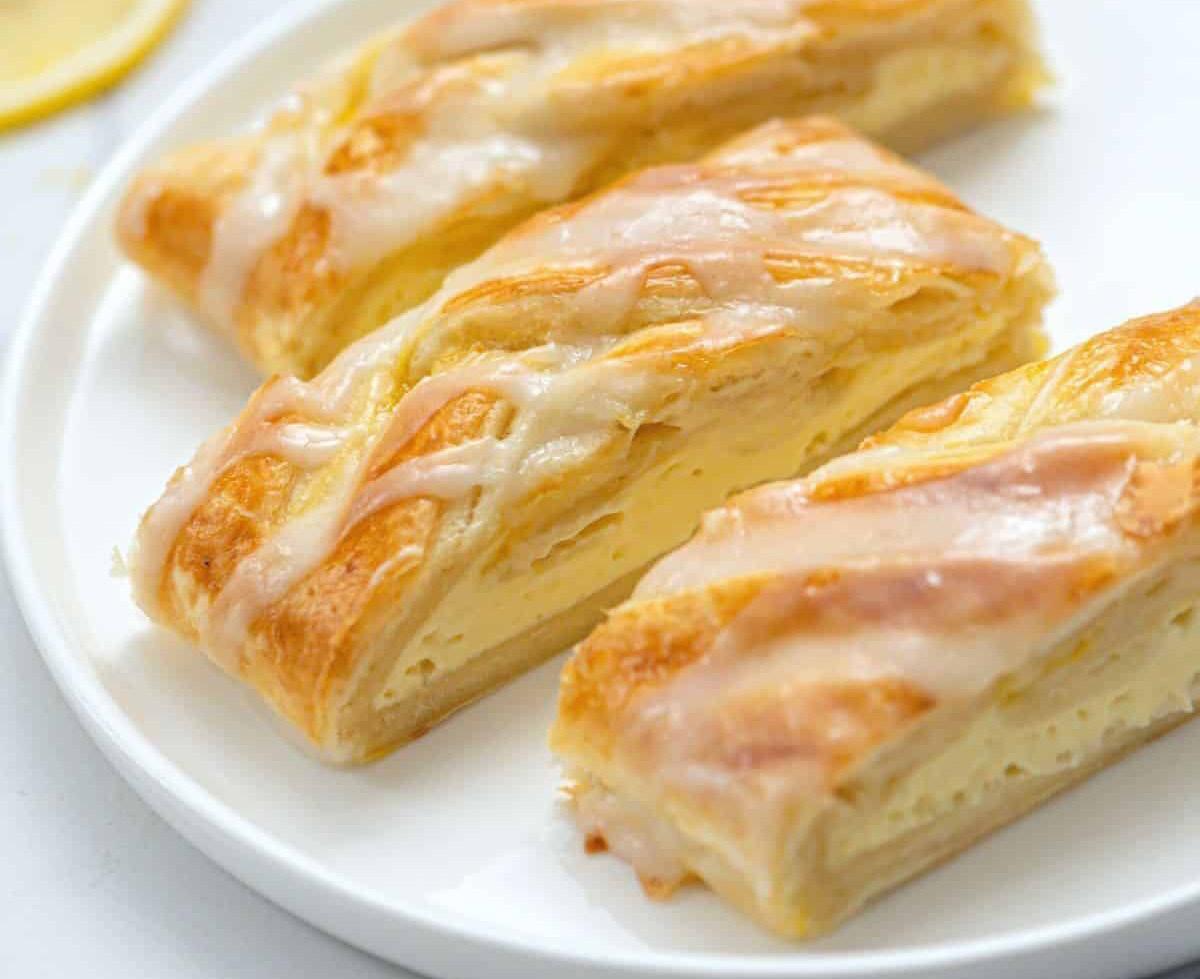
Make 2” slits at 1” intervals on both sides of the dough.
Interlock the sides together (like a braid).
Bake the pastry for 20-30 minutes (until golden brown).
Mix the glaze ingredients (add the liquid ingredients slowly to avoid making it too runny, adjusting until you get the desired texture).
Glaze the pastry while still warm.
Tip: The easiest way to melt white chocolate is to break up the bar, place it in a plastic bag, and submerge it in boiling water.
* Blessing on pastry:
Baruch atah A-donay, Elo-heinu Melech
Ha’Olam borei minei mezonot. Blessed are you L-rd our G-d, King of the Universe, Who creates various kinds of sustenance.
B’tayavon!
— Rebbetzin Feigie Ceitlin is the program director of Chabad Tucson and head of school of Lamplighter Chabad Day School.
What makes a place holy?
Unlike the words church or temple, which mean “House of the Lord,” the Hebrew term for a synagogue is beit knesset, which means “a house of gathering.”
Where the inauguration of a temple might involve offering sacrifices and anointing oil to introduce holiness into the space, there is no ritual or procedure for inaugurating a synagogue—to formally dedicate it and make it holy, all you need is to gather and pray there.
The Sages teach that when ten individuals pray together in a designated space, their togetherness itself transforms the brickand-mortar structure into a holy place. No additional rituals or functions are required.
Furthermore, the holiness of a synagogue is not exclusive to the prayer that transpires there.
As the Talmud teaches: “The Divine Presence rests upon every gathering of ten,” even when those assembled are gathered for reasons other than sacred study or prayer.
Interestingly, the way synagogues were organized historically reflects the idea that a space is a space whose function is to connect people with G-d and with each other.
For example, one of the oldest synagogues described in Jewish literature was the Great Basilica in Alexandria, Egypt. The Talmud describes the socially sensitive setup of this early synagogue in the following way:
“Members of various crafts would sit together. Goldsmiths would sit among themselves, silversmiths among themselves, blacksmiths among themselves, coppersmiths among themselves, and weavers among
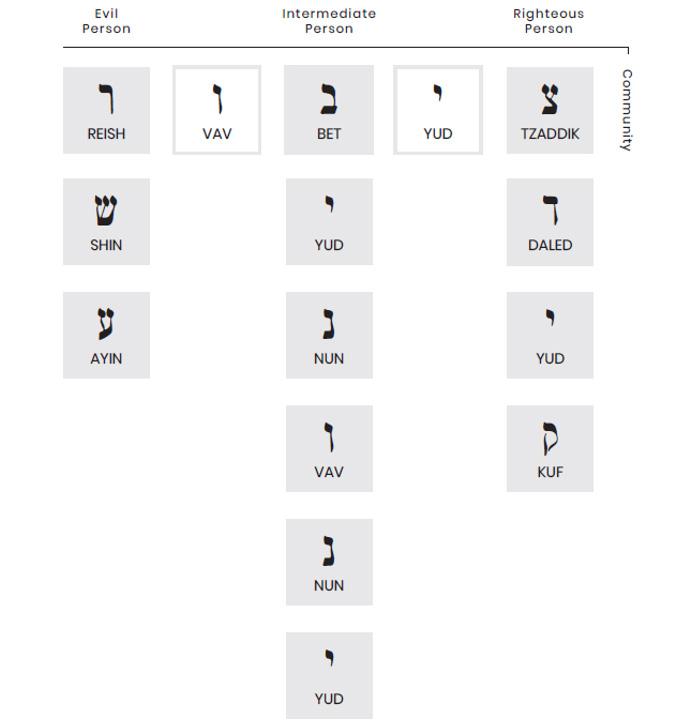
themselves. When a stranger entered, he would recognize people who plied his craft and would join them. From there, he would secure a livelihood for himself and his household, as his colleagues would find him work in that craft.”
For truly, nothing is more precious and holy to G-d than His children coming together, whether for matters sacred or mundane.
Such togetherness is a foundational element of prayer. Indeed, some communities begin the morning prayers
with the affirmation: “I hereby accept upon myself the positive mitzvah of You shall love your fellow as yourself.”
By stating this at the outset of one’s prayers, one sensitizes and expands one’s field of concern and responsibility beyond oneself, connecting one’s experience, aspirations, and blessings with the larger community of which one is a part.
While many prayers from the liturgy may be recited alone, some of the most important Jewish rituals, such as reading from the Torah, reciting the Mourner’s
Kaddish, or performing a marriage ceremony, cannot be enacted without a minyan—a quorum of ten. What’s more, even those who aren’t present in the synagogue during prayers benefit when the community gathers in prayer.
Why? Because, while G-d is certainly accessible to all on an individual level at any time, He is more readily accessible when we turn to Him as a unified collective, whether in space or time.
There is even strength in diversity and inclusivity when it comes to prayer. Accordingly, we learn that a minyan does not have to be made up of only spiritually advanced or learned individuals; rather, it can include people at any level of spiritual development and religious observance. As the saying goes, “Nine great rabbis cannot make a minyan, but ten simple shoemakers can.”
Notably, the Hebrew word tzibbur, another word for a community gathered for prayer, is an acronym for tzaddik/righteous person. But a real tzibbur must include and represent the full spectrum of the community.
The collective setting for Jewish prayer is so important because it models one of the broader functions of prayer in general, which is to move our attention from the particular to the universal, from the subjective to the objective, from the “I” to the “We,” shifting our focus from our own self-centered desires to a more selfless concern for the good of the whole that includes and transcends us individually.
This emphasis on communal prayer thus conveys an essential message about Judaism’s approach to our relationship with G-d. When we succeed in overcoming our self-oriented interests by coming together in prayer, that is when and where we are most likely to discover G-d and to find favor in His eyes.
the does spiritually , it spiritual As cannot shoemakers another prayer, general, to own overcoming where
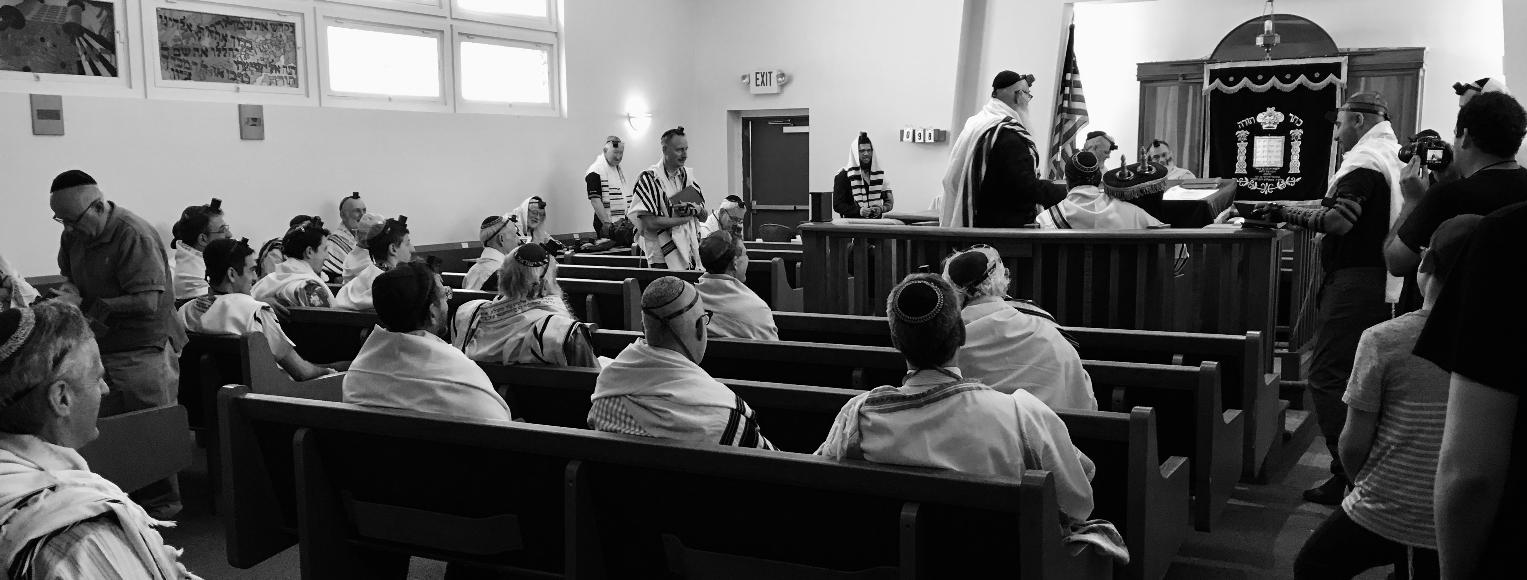
Indeed, the Talmud teaches that G‑d is more attentive and available to us when we put the needs of others before our own. As our Sages teach: “Anyone who asks for compassion from Heaven on behalf of another, and he requires compassion from Heaven concerning that same matter, he is answered first.”
This dynamic is poignantly expressed in the Book of Job: And the Lord changed the fortune of Job when he prayed for his friends.
This powerful idea helps explain the fascinating Jewish custom of covering one’s face with a tallit during the Priestly Blessings when the kohanim stand before the congregation to bless them on special occasions.
Our Sages teach that just as Moses covered his face when the Divine Presence was revealed to him at the burning bush, we, too, cover our faces at the auspicious moment when these prayers are recited in deference to the unique revelation of G‑d’s presence elicited by this communal blessing.
But why is G‑d’s presence more manifest during the Priestly Blessings than at any other time or through any other prayer?
The answer is that this is the one prayer
in which congregation members bless each other rather than being blessed by G‑d directly. Paradoxically, G‑d’s presence is even more manifest at that moment, despite the role of an intermediary, because there is nothing more precious to G‑d than when one of His children blesses another from the depths of their being.
When such love and concern are the foundation of our relationships, G‑d’s presence is amplified in the community.
This sentiment is echoed in the final words of the Amidah prayer, where we say, “Bless us, our Father, united all as one, in the radiance of Your countenance.” The mystics interpret this to mean: “Bless us, our Father, [because] we are united all as one, in the radiance of Your countenance.”
In other words, it is on account of our togetherness that we merit G‑d’s blessing.
Accordingly, we find that the greatest milestones and watershed moments in Jewish history took place after, and as a result of, a heightened sense of unity. For instance, Rashi points out that at Mount Sinai, millions of Israelites gathered “like one person, with one heart.” Our Sages teach that the people’s unique display of collective unity elicited G‑d’s revelation of the Ten Commandments.
Today, we live in a hyper‑individualistic
world, where, as time progresses, many tend to burrow deeper and further into themselves, creating micro‑universes based on limited and limiting personal preferences. This is the age of the self‑ reinforcing algorithm. Judaism’s approach to communal prayer is, in a sense, the antidote to such egoic inertia.
From this perspective, prayer is not only about finding ourselves but also, and even more importantly, about losing ourselves in the collective pursuit of something beyond us.
The beit knesset teaches us that we are all interconnected, that we are incomplete without each other, and that a lack in one
is a lack in all.
By gathering together, including and transcending our individuality, we gain access to the Divine Presence and create a fitting receptacle for G-d’s blessing. As our Sages teach: “There is no better vessel for Divine blessing than peace.” Such sensitized socio‑spirituality is the highest form of holiness we can aspire to.
Put simply, we don’t gather in a synagogue because it is holy; a synagogue is holy because that’s where we gather.
The Big Idea: Where is G‑d? Wherever you let others in.
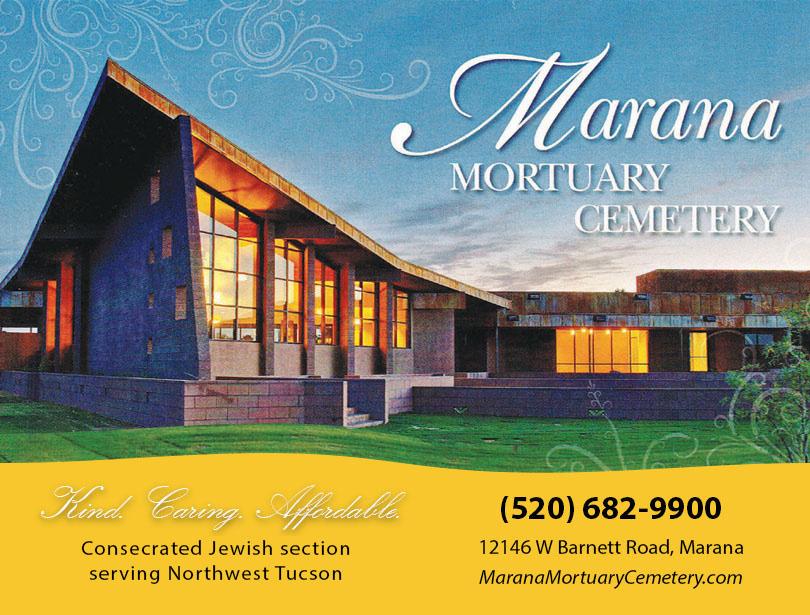
Summer in the city or on vacation is fun, exciting, and HOT, HOT, HOT. We are fortunate that our bodies are masterfully designed to deal with extreme heat levels. Specifically, when overheated, we flush and sweat, allowing the body to release excess heat and cool down. We also become thirsty, which reminds us to drink. After approximately a week into the summer, our bodies become acclimated to the new climate and can handle it even better. Despite this, we must always be alert for potential dehydration and heat-related injury.
It is of crucial importance to always bring enough fluids for any summertime excursion. Water, fruit drinks, or sports drinks are all acceptable forms of hydration in most situations. Though children will usually drink what is necessary to stay hydrated if given access to fluids, distractions (like playing a sport) can require that they be reminded. Obviously, babies and children with special needs need extra consideration as well. In camp or trip situations, drinks should be available and easily accessible for all. Obviously, access to fluids should never be used as a reward or punishment.
Even when there is access to fluids, heatrelated injuries are sadly common. Infants and active adolescents are particularly at risk. It’s important to be aware of the signs of heat injury that, if recognized early, can be easily treated. These include looking flushed, becoming irritable or lethargic, feeling nauseated, or actually vomiting. A baby exposed to the heat may become irritable and sick looking very quickly. Fever may occur and is usually a more advanced sign. Older children also need to be watched for signs of heat stroke, especially if they have been out playing in
By Dr. Avraham Gottesman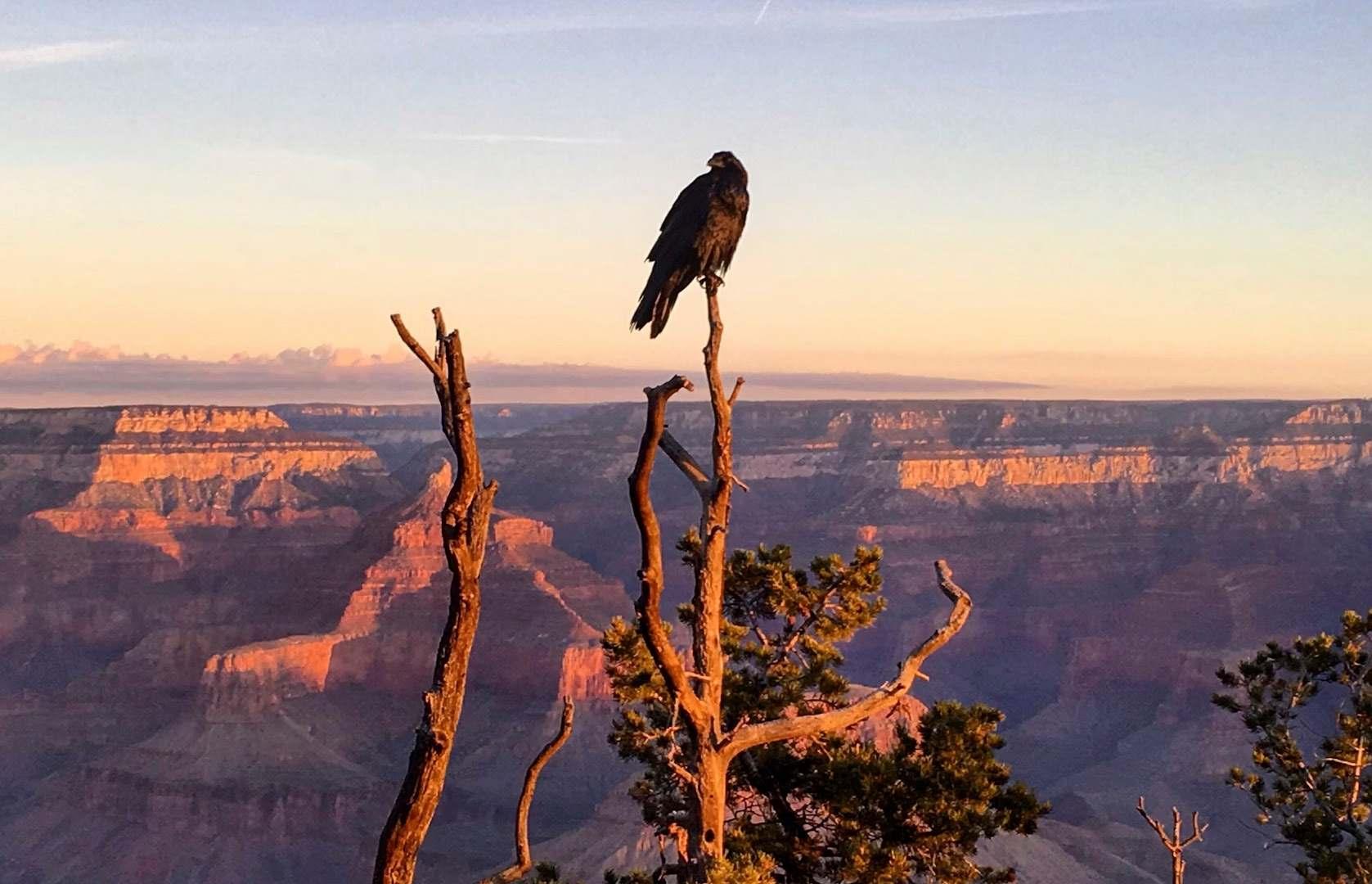
the sun.
As the saying goes, “An ounce of prevention is worth a pound of cure.” Your role in this, as a responsible adult, is crucial. Do not leave the house without water, and make sure infants and younger children are drinking throughout the day. Older children should be educated about the importance of staying hydrated and the signs of potential heat injury and instructed to inform you if they begin to experience any symptoms.
We all know not to leave babies in a hot car, but that applies to older children as well.
If you suspect someone is showing signs of heat injury, no matter the age of the person, immediately bring them to a shaded or air-conditioned area. A fan or a cold wet cloth around the neck can be used to cool them down, and a drink, preferably a cold one, should be given. Freeze pops can often be useful in a situation where a person is having difficulty drinking on their own or keeping the liquid down.
Fever or severe overheating that appears to indicate a more severe injury can become very dangerous. In such cases, it is usually advisable to call 911. When in doubt, err on the side of caution.
Wishing you all a happy, healthy, and enjoyable summer!
- Dr. Avraham Gottesman grew up in Toronto, Canada. He received his medical degree from Albert Einstein College of Medicine in the Bronx and trained in pediatrics at LIJ in Queens. His practice is in Brooklyn, NY.
Molly Picon was a petite woman with many talents. Picon was a star on both Yiddish and English-speaking stages, motion pictures, radio, and television. She wrote almost 100 songs and skits for the stage. She performed for the sick, the American troops in World War Il, and the surviving Jews in Europe. Picon also took children into her home through the Foster Parents’ Plan for War Children.
Picon was the elder of two daughters of Lewis and Clara (Ostrow) Picon. She was born in a tenement in New York City on June 1, 1898. Her father was from Warsaw, Poland, and worked in the needle trade. Her mother had come from Kyiv and worked as a seamstress.
The family moved to Philadelphia when Picon was three years old. At the age of five, she sang at an amateur night for children and won. She then made the rounds of all children’s amateur nights, winning many prizes and having coins tossed to her by the audience.
Picon’s mother was a dressmaker for actresses. One of the actresses told her about an opening in Mike Tomashefsky’s Yiddish stock company. At six, Picon began playing children’s parts in Tomashefsky’s company.
In 1919, at the age of 21, Picon toured with a vaudeville act called “The Four Seasons.” When members of the act came to Boston, they found the theaters closed
due to an influenza epidemic. Out of work and out of money, the story goes that Picon went to a local theater in search of a job.
Jacob Kalich, the manager of the Grand Opera House, gave her a job - but more importantly, he fell in love with her. The two were married in July of that year.
Kalich, also known as Yankel, recognized his wife’s talents. He took her to Europe to perfect her Yiddish and to star in his operetta, Yankele. Picon played the role of a small boy. The tour was very successful. After they returned to the United States in 1923, they played the show to a sold-out audience.
By 1936, she was hosting a radio program and made her Broadway debut in 1940. Picon made her Hollywood debut in the 1963 Frank Sinatra vehicle Come Blow Your Horn and famously played Yente the Matchmaker in the 1971 film adaptation of Fiddler on the Roof.
She was married to Kalich until his death from cancer in 1975. She died in Lancaster, Pennsylvania, on April 5, 1992. The couple didn’t have children. Picon wrote two books: So Laugh a Little (1962), a biography about her family, and Molly! (1980), her autobiography.
- Originally published in Jewish Heroes & Heroines of America: 150 True Stories of American Jewish Heroism (Frederick Fell Publishers, Inc.)
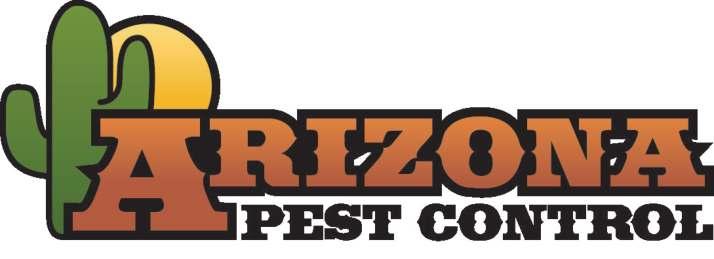
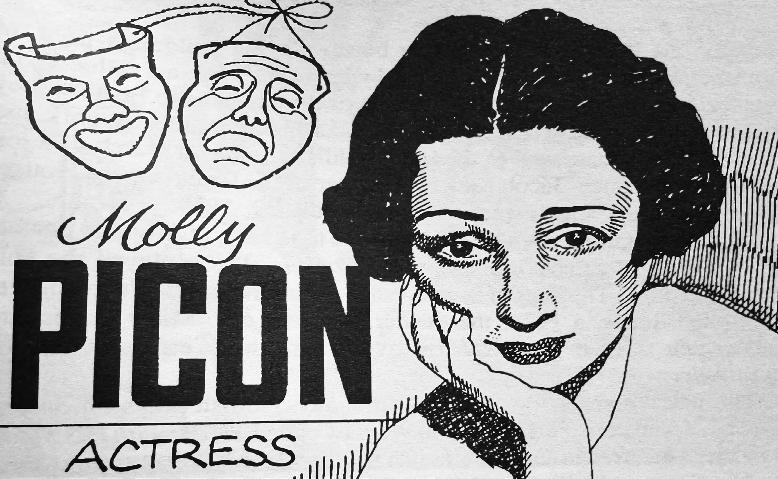
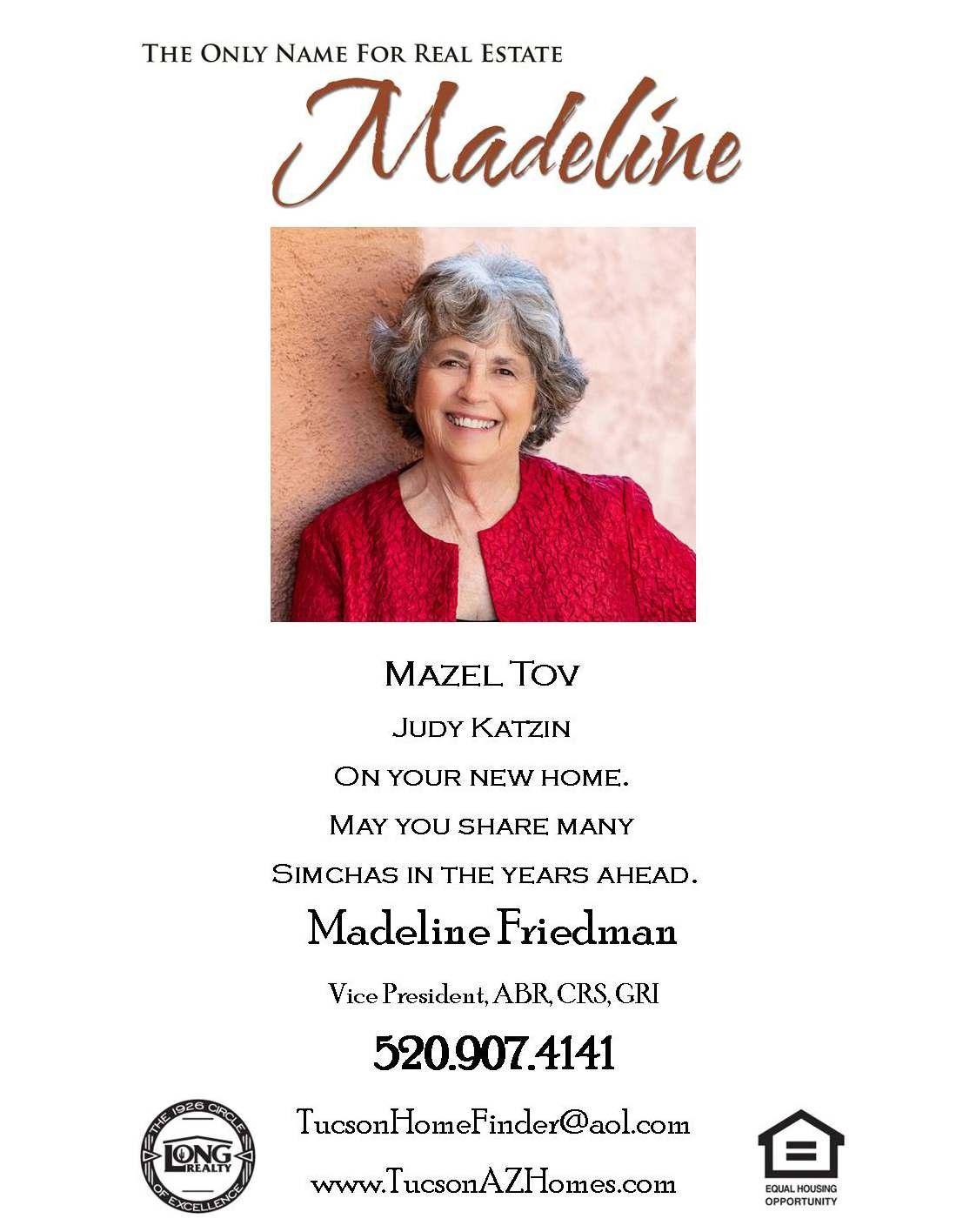
It’s that time of the year again – time to think about school supplies. Not buying them - dealing with the ones your kids are coming home with. Well, parts of them. And not necessarily the ones you sent.
It hardly seems fair. You went hunting at several stores, looking for exactly what the teachers asked for in the fall. But now your kids are bringing you whatever is left. No one asked for this. You didn’t send a list to the teacher that said, “a half of a set of markers, a sefer that’s seen better days, a pencil I don’t recognize as ever coming from my house…” It’s one thing if they were items you could save for this coming September, but mostly, they are not.
Things they come home with:
- Three pencils with broken points and no erasers.
- One giant dirty eraser block with pencilpoint holes in it.
- Broken crayons that are either black or blue or indigo or dark purple or brown.
- A bottle of glue that is glued shut.
- One half-full glue stick. (“Look, it’s half full!” “I sent you with 12.”)
- Most of a ruler.
- That bag of spare clothes you had to send with your kindergartener that he outgrew so long ago that it missed going into the appropriate “too small” box in the attic.
- A binder whose rings don’t quite line up anymore.
- A folder with a cookie in the pockets. No bag, just a cookie.
By Mordechai Schmutter By Schmutter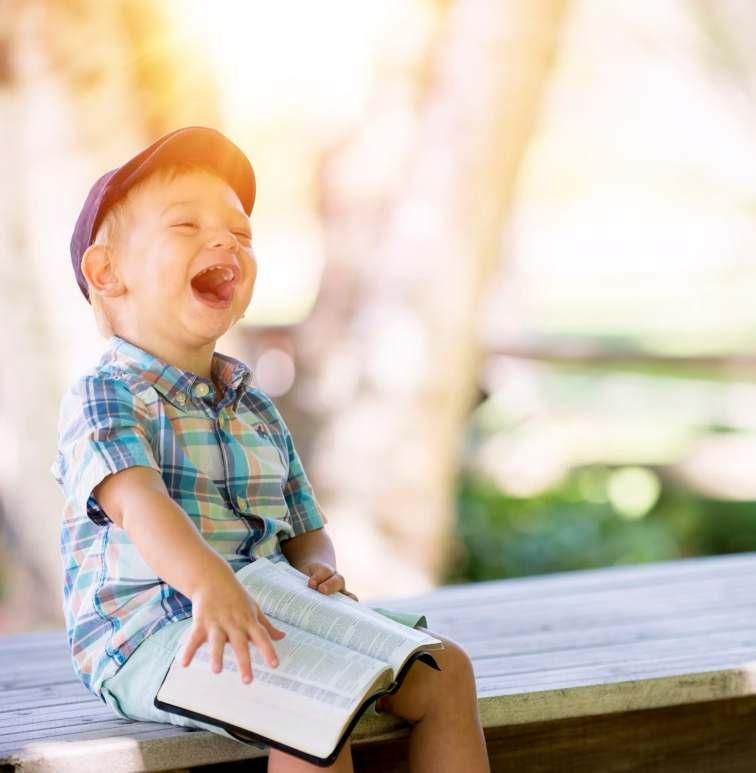
- Two markers that still work, from a set of 12. (I have a drawer at home with 26 grey markers in it.)
- A book sock that smells like an actual sock. What did he do to get it to this point? I can’t imagine this protected the book.
Basically, all the nice, shiny stuff you worked so hard to get for your kids at the beginning of the year is gone. What is left looks like the kids kept all their supplies outdoors for the ten months of school.
And why does everything in the pencil box smell that way? You open the box and you get hit in the face with this supplies
cholent that’s been festering all year.
“SUPPLIES!”
A couple of years ago, when I was dropping my son off at school on the last Monday of classes, he asked, “Should I take my bath mat out of my knapsack?” And I said, “Goodbye. Wait, what? Why do you have a bath mat in your knapsack? No, never mind. Go to school!”
“Should I tell you what it was for?”
“No! Get out of the car! You’ve been home
all weekend with a bath mat in your knapsack and you’re bringing it up now?”
And then I drove away, but now I was wondering, “Why does he have a bath mat in his knapsack?” And then I vaguely remembered that back in September, his teacher had said at orientation that everyone needed to bring in a carpet for reading time. He gave us some dimensions – about 2 feet by 3 feet – so kids wouldn’t show up with, say, a living room rug. And we were like, “Who has a carpet of those dimensions just lying around, just in case? Do we have to go to a carpet store for this?”
So we bought him a bath mat that matches absolutely nothing in our house—we didn’t even get the matching toilet mat. And now, apparently, he’s bringing that bath mat home, which is something we never considered he’d do, so now we have to store a random bath mat somewhere in the house.
And this got me thinking about what happened to all the Ziploc bags I sent? Like every parent, we sent an entire box of sandwich bags, and not a single one came home at any point of the year. Is the teacher just using us to do her shopping? When I send my kid with a snack in the morning, I’m already sending it in a bag. What else do you need the bags for? And what’s happening to the bags I keep sending with snacks in them? The snacks I send end up at the bottom of the knapsack without the bag. Someone’s walking away with bags here.
Maybe I could take all the supplies that the kids brought home at the end of the year and send one kid back to school with those in the new year. I could pick whichever kid I love the least and send him with old supplies and a box of all grey markers. I’m thinking of one of our high school kids. He’s going to have the only dorm room with a bath mat.
1. Who lived first?
A. Moses
B. Noah
C. Joseph
D. Abraham
2. Place the matriarchs in age order
A. Rachel, Sarah, Rebecca, Leah
B. Sarah, Rachel, Rebecca, Leah
C. Sarah, Rebecca, Leah, Rachel
D. Leah, Sarah, Rebecca, Rachel
3. Which period was most recent?
A. Geonic
B. Rishonim
C. Acharonim
D. Talmudic
4. Place these kings in chronological order
A. Saul, Hezekiah, David
B. Hezekiah, David, Saul
C. Saul, David, Hezekiah
D. Hezekiah, Saul, David
5. Which rabbinic book came first?
A. Mishnah Halachot
B. Mishneh Torah (Rambam)
C. Mishnah Berurah
D. Mishnah
 Photo: Monica Sauro/Unsplash
Photo: Monica Sauro/Unsplash
6. Which holiday was declared first?
A. Hanukkah
B. Purim
C. They were established at the same time
D. It is debated among Ashkenazim and Sephardim
7. Which event took place during Rabbi Akiva’s life?
A. The Louisiana Purchase
B. The breaking of the Tablets
C. The destruction of the Second Temple
D. The First Crusade
8. Who lived most recently?
A. The Chafetz Chaim
B. The Alter Rebbe
C. The Ramban
D. The Arizal
9. Place these prophets in chronological order
A. Elijah, Samuel, Ezekiel
B. Elijah, Ezekiel, Samuel
C. Samuel, Elijah, Ezekiel
D. Ezekiel, Elijah, Samuel
10. Which famous Jewish woman lived most recently?
A. Bruriah
B. Hannah
C. Bathsheba


